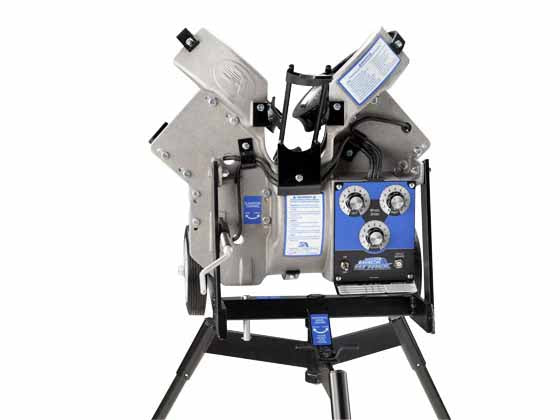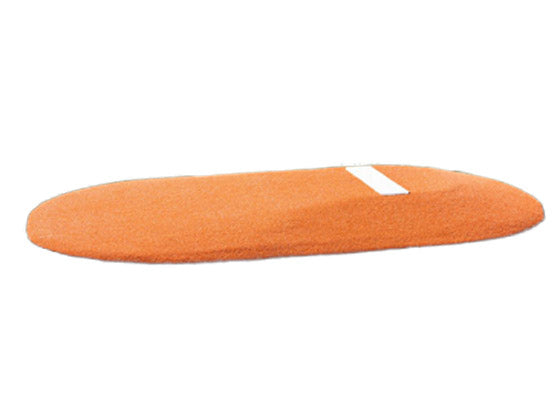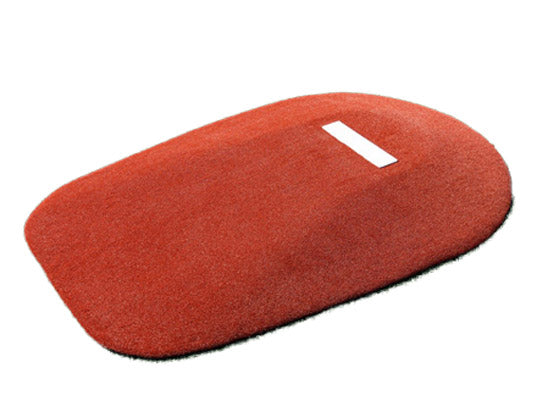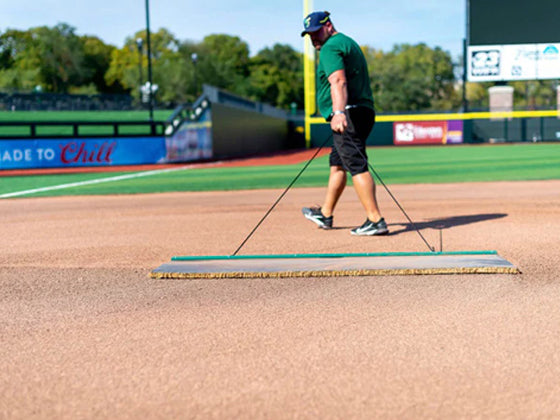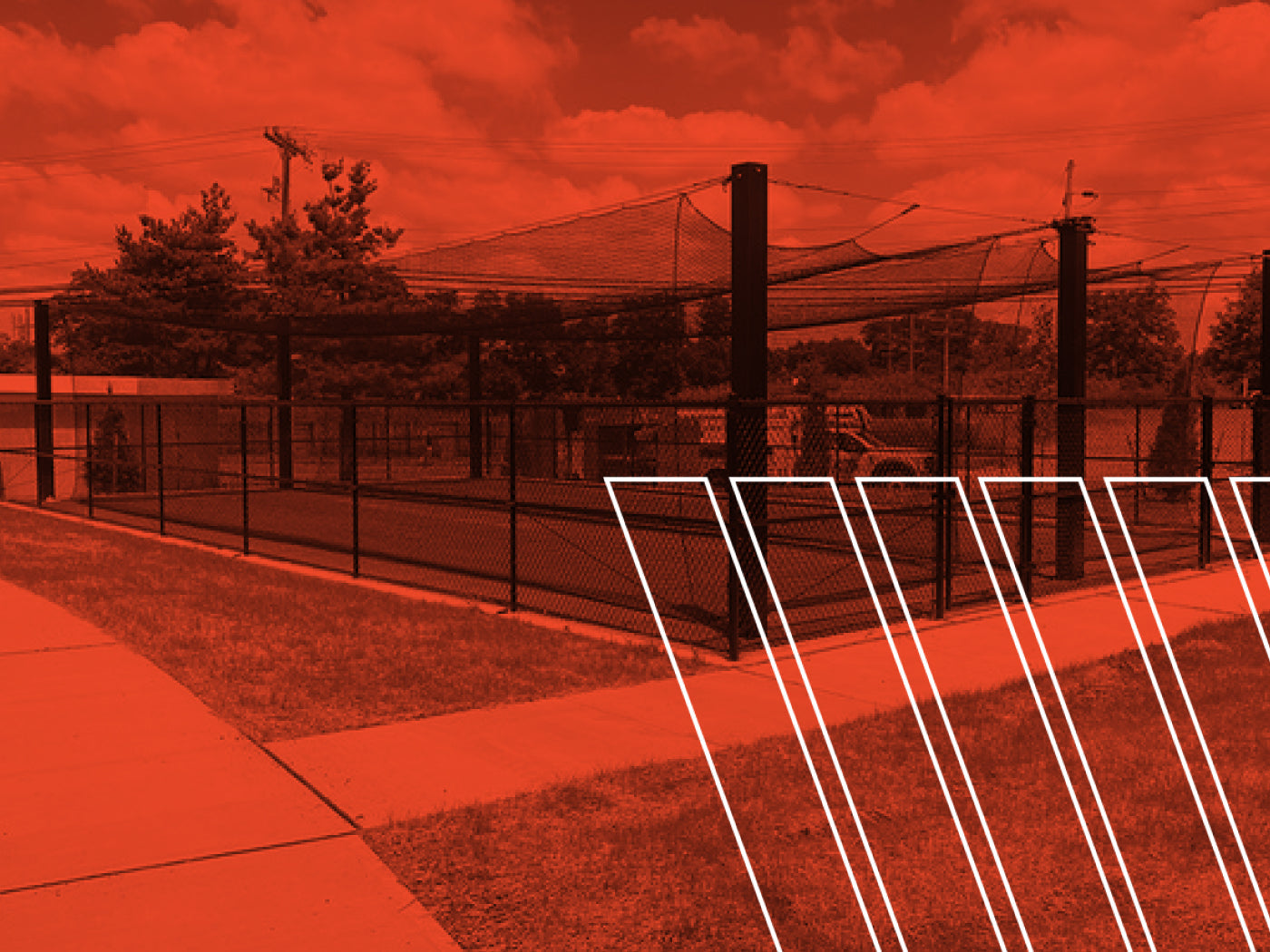A (very) frequent question we hear from our customers is:
“What is the difference between plyo and weighted baseballs?”
In this guide, we'll break down both tools—plyo balls and weighted baseballs—to help you recognize their distinct advantages and incorporate them effectively into your training routine.
Read on to find the perfect baseballs for your team!
What Are Plyo Balls and Weighted Baseballs?
Plyo balls and weighted training balls are powerful training tools in baseball, designed to enhance arm strength, improve pitching mechanics, and increase velocity by engaging specific muscle groups and improving muscle coordination.
Plyo balls, short for plyometric balls, are lightweight training tools designed to be thrown with maximum effort against a wall or rebounding surface. They're typically lighter than regulation baseballs (from 4 oz. to 8 oz.) and are used primarily for improving arm strength, throwing mechanics, and velocity. The goal is to develop quick, explosive movements that translate to faster pitches.
Plyo balls come in various colors and sizes, each with a specific training purpose. For example, heavier plyo balls (around eight oz.) are better for developing arm strength. In comparison the lighter ones (4 oz.) help to improve arm speed and refine mechanics without overloading the shoulder.
On the flip side, weighted baseballs are heavier than standard baseballs, usually between 9 and 16 oz. The extra weight puts more strain on the arm and shoulder, strengthening the muscles during pitching. It also challenges pitchers to generate more force, increasing throwing velocity compared to regular baseball.
Choosing the right weight range is key—check out our roundup of the best weighted baseballs to find options that balance power development with safety.
What Are the Training Benefits of Plyo Balls?
The primary benefit of plyo balls is their ability to improve arm speed, which directly impacts pitching velocity. By throwing lighter balls (4 oz. to 8 oz.), pitchers focus on creating explosive, fast movements. This helps them develop the fast-twitch muscle fibers needed to generate quicker arm speeds during their regular pitching mechanics.
Other advantages are:
1. Helps to Build Muscle Memory:
When used consistently, plyo balls encourage pitchers to maximize their arm whip—a crucial element for increasing pitch velocity. Over time, these explosive movements build muscle memory, translating into higher speeds than when using a standard baseball.
2. Better Pitching Mechanics and Efficiency
Plyo balls aren't just for speed but also for developing proper pitching mechanics. The lighter weight forces pitchers to focus on the flow and timing of their delivery, helping them fine-tune their mechanics for maximum efficiency.
For example, the overhead toss, sidearm throw, and rotational drills target the windup, release point, and follow-through mechanics. This reduces shoulder and elbow strain, ensuring pitchers maintain a healthy, sustainable pitching form.
3. Improves Shoulder Strength and Stability
Incorporating plyo balls into shoulder-focused exercises can enhance the strength of the rotator cuff and surrounding stabilizer muscles. Many plyometric drills mimic the motion of pitching, which is vital for preventing injury and increasing endurance during games.
For consistent, accurate tosses during weighted‑ball long‑toss or plyo programs, explore our selection of pitching machine balls and softballs.
What Are the Training Benefits of Weighted Baseballs?
The main benefit of using weighted baseballs is their ability to build arm strength. The added weight forces pitchers to work harder during each throw, engaging more arm, shoulder, and core muscles. This increased resistance leads to muscle hypertrophy—the growth of muscle fibers—which helps pitchers develop the power they need for stronger, faster pitches.
Other benefits are:
1. Improves Pitching Mechanics and Control
Using weighted baseballs in drills helps pitchers focus on proper follow-through and release point, which is crucial for maximizing their control and consistency on the mound. The heavier weight forces the body to work in sync, reducing the mechanical flaws that can lead to wild pitches or injury.
2. Increased Throwing Endurance and Fatigue Resistance
Throwing weighted baseballs is an excellent way to build endurance for pitchers who need to handle long outings or multiple innings. The resistance from the heavier balls challenges the arm to work longer and harder, which develops the stamina required for extended pitching performances.
3. Maximized Velocity and Explosiveness
By training with heavier balls, pitchers can improve their core strength and rotational power, which are key to generating maximum velocity. Once they return to a standard ball, they'll notice a significant improvement in their ability to throw harder and more efficiently.
Which Training Tool Is Best for Different Player Positions?
While plyo balls and weighted baseballs are most commonly associated with pitchers, they can still help players in other positions (e.g., infielders or catchers) to improve strength, speed, and overall performance.
Here's how:
How Do Pitchers Benefit From Each Training Method?
As outlined earlier, plyo balls help develop the explosive speed needed for fast pitches, while weighted baseballs improve the power required to generate higher velocity and maintain consistency throughout a game.
Combining both tools builds speed, power, and control—three essential elements for effective mound performance.
Are Plyo Balls or Weighted Baseballs Better for Infielders?
Infielders benefit from plyo balls by developing fast, explosive arm movements to improve quick release times.These drills reinforce fluid throwing mechanics while building the arm speed needed for fast, accurate throws across the diamond.
Weighted baseballs complement this by enhancing overall arm strength and throwing power—especially for longer throws from deep in the infield. The added resistance also helps develop the smaller muscle groups that support joint stability during quick transitions.
However, seeking professional counsel before incorporating weighted baseball drills into your training schedule is best.
If you’re planning to mix in machine‑based drills, learn whether you can substitute real balls in your machine in our detailed guide on can you use real ball in a pitching machine.
What About Outfielders: Which Tool Improves Their Performance?
For outfielders, plyo balls sharpen fast-twitch muscle responses and throwing accuracy, especially when delivering quick throws to the plate or bases. They help improve reaction time and arm speed under game-like pressure.
Weighted baseballs help build throwing strength for long-distance accuracy from deep in the outfield. The added resistance supports muscle development across the shoulder and core, which helps extend throwing range.
As you can see, both tools work in tandem to improve different aspects of an outfielder's throwing game. So, it's best to combine them to see a notable difference in strength and speed.
How Can Catchers Utilize These Training Tools?
Catchers rely on strength, speed, and quick reactions, and both plyo balls and weighted baseballs play key roles in this skill development.
Plyo balls are excellent for catchers as they can help develop quick arm movements for fast throws to second base or the pitcher.
Weighted baseballs build arm strength and endurance, helping catchers remain effective throughout long innings.They're especially helpful for developing shoulder stability and forearm power.
Are Weighted Balls Dangerous?
No, weighted balls are not (inherently) dangerous. But they can be if they're overused or used for quick fixes.
Think of it this way – weighted balls are tools. They can be highly effective during submaximal throwing and drill work, especially when incorporated into structured programs focusing on mechanics, mobility, and recovery.
Problems arise when players jump into weighted ball training without a proper foundation. If you're chasing velocity gains without addressing poor movement patterns or skipping arm care, you're opening the door to injury. That's why most coaches and trainers recommend easing into weighted ball work with low volume, light weights, and expert supervision—especially for youth league players.
Bottom line? Weighted balls aren't dangerous when used correctly. They're just one piece of a much more extensive training puzzle. Respect the tool, build a solid base, and prioritize long-term development over short-term gains.
To automate your plyo or weighted‑ball routines entirely, check out our lineup of pitching machines baseball and softball for programmable, high‑rep training.
Note: Seek professional advice from a certified coach or medical professional before engaging in plyo or weighted ball drills.
What Are the Most Effective Plyo Ball Drills?
There are several plyo ball exercises that help improve different aspects of pitching performance. Here are some of them:
1. Reverse Throws
Reverse throws are a great way to develop the shoulder strength and arm speed necessary for effective pitching. This drill trains the T-spine rotation and posterior shoulder strength.
2. Walking Torques
The Walking Torques exercise is excellent for developing upper body mechanics and hip/shoulder separation. By using a plyo ball, you engage both your upper and lower body in a coordinated movement that mimics the pitching motion.
3. Step Behind Drill
The Step Behind Drill is a great plyo ball exercise for improving the timing of pelvis rotation and hip/shoulder separation.
To keep your plyo‑ball drills flowing without constant retrieval, pair them with one of our reliable ball feeders for nonstop reps
What Are the Most Effective Weighted Ball Exercises?
Here are some of the most effective weighted ball exercises for pitchers:
1. Long Toss with Weighted Balls
Long toss is one of the most beneficial drills for building throwing power and arm endurance.
Using a weighted ball during a long toss helps strengthen the shoulder and elbow joints and the forearm muscles. This exercise is excellent for building the distance and velocity needed for pitches thrown with power.
2. Medicine Ball Rotational Throws
The medicine ball rotational throw is an excellent exercise for improving the rotational power and core strength needed for a strong pitching delivery.
This exercise focuses on developing the ability to generate velocity from the hips and torso, which translates directly to increased speed and power when throwing a baseball.
3. Weighted Ball Push-Pull
The push-pull exercise is excellent for developing both arm strength and shoulder stability. This drill improves the push-and-pull motion inherent to the throwing mechanics, helping pitchers build consistent and powerful arm actions.
Plyo vs Weighted Baseball: What Do Baseball Coaches and Trainers Recommend?
Here's what top coaches and trainers have to say about integrating these tools into your regimen and which one might be most effective depending on your goals.
Badley Thomas, head coach at True North Trailblazers College Prep Program, says it's the best investment any softball player can make:
“Investing in a set of plyo balls is one of the best bangs for your buck any softball player can make. They're not only for pitchers but also amazing for any overhand throwing. They're affordable and can be used when you have very little space available.”
Another Milb coach, Josh Glenn, affirms that it improves movement patterns and provides instant feedback:
“Receiving plyo balls reinforces strong, optimal movement patterns while providing instant feedback. The clear response helps athletes recognize whether they executed the move correctly, promoting better mechanics and faster improvement.”
Jack Berry, a pitching coach who has worked with a top 2028 HS grad throwing high 8-s at 14, explains how weighted balls help players develop the right throwing skills:
“The great thing about weighted baseballs that plyos don't offer is the feel of a real baseball with varying weight accompanying it. These can be thrown in catch play, long toss, or bullpen. This can make any transfer of changes much smoother if you struggle with something mechanically when switching from plyo balls to a regular baseball.”
Brett Graves, a former American professional baseball player, admits that he used weighted balls (pretty well) in his training program. In his words:
“The biggest thing (weighted balls) helped me achieve is not to get a whole bunch of velocity. If that comes, then great. The biggest focus for me these days is the enhanced recovery I feel from them and the ability to use them to help my body self-organize and figure out its most efficient path.”
If you still don't think they're worth a shot, you're not alone. Coach Patrick Hall, recruiting coordinator at CCSU, felt the same until he did some research:
“...4/5 years ago, I was totally against tech/plyo balls, but I did some of my due diligence. It helps when used properly, but it surely doesn't test poise, heart rate, or competitiveness. I'm a believer in throwing the ball hard/throwing long tosses and having intent in catch play. Throwing hard into a net is not what we old guys grew up doing. That said, guys aren't getting to the big leagues today throwing 89-92 anymore, and velo makes money. I hope we find a common ground on velo/pitchability.”
In summary, find a balanced approach incorporating plyo balls and weighted baseballs into training. Depending on your specific needs—whether improving mechanics, building velocity, or strengthening the arm—you'll need to tailor your program to ensure the best results.
For those just starting, work with a coach to develop proper mechanics before adding resistance training tools like weighted/plyo balls.
Conclusion
At the end of the day, it's all about finding a balance. Incorporating plyo balls and weighted baseballs into your training can help you maximize your practice time, improving both technique and power in your throws. As always, make sure you're working with proper form and gradually progressing through your exercises to avoid injury.
Whatever path you choose, the key is consistent, focused practice. By adding plyo balls and weighted baseballs to your training regimen, you'll be well on your way to maximizing your pitching potential.

 Contact Us
Contact Us